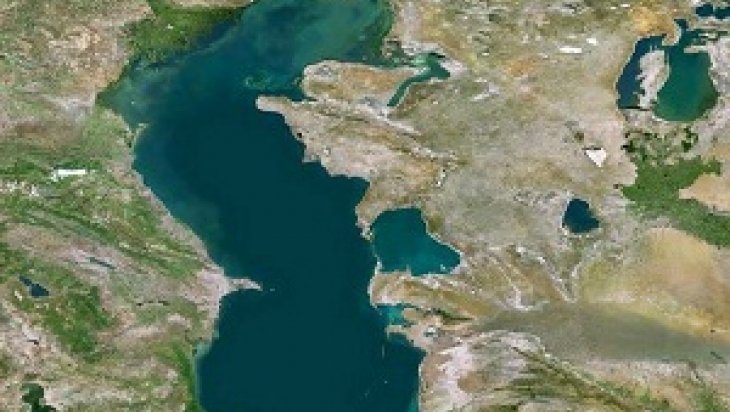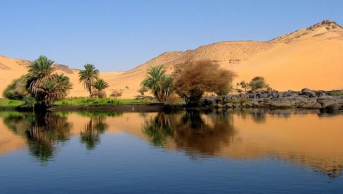The “Second Wave" of Interbasin Water Transfers in the Middle East: Adding “Transboundary Dimension" to Cox’ Framework

Interbasin water transfers have, from several dimensions, often been issues of lively debates, and from time to time, of friction. There has been a vast literature on water transfer issues, with bulk of studies interested in evaluating single projects. As per capita water resources are diminishing universally, it is highly probable that the transfer of water between basins will continue to be one of the mostly discussed subjects in broader water literature.
In a seminal paper in 1999, William Cox, a professor of civil engineering and environmental engineering, provided a framework for evaluating interbasin transfers and determining whether they are justified. Cox’ framework included five criterion, which can be thematically categorized. While it is a perfectly illuminating argument for testing the water transfer projects’ level of justification, a new criterion is also needed given the rise of the “second wave" of water transfers, i.e. water transfers from transboundary river basins. Before discussing this trend, it is Cox’ framework that we present first.
The first criterion, which relates to economic dimension states “’in order for a proposed interbasin water transfer to be justified, the area of delivery must face a substantial deficit in meeting present or projectedfuturewater demands after consideration is given to alternative water supply sources and all reasonable measures for reducing water demand.”
According to the second criterion,“in order for a proposed transfer to be justified, the future development of the area of origin must not be substantially constrained by water scarcity; however, consideration to transfer that constrains future development of an area of origin may be appropriate if the area of delivery compensates the area of origin for productivity losses.”
In order for a proposed transfer to be justified, the third criterion argues, “a comprehensive environmental impact assessment must indicate to a reasonable degree of certainty that it will not substantially degrade environmental quality within the area of origin or area of delivery; however, transfer may be justified where compensation to offset environmental injury is provided.”
The fourth criterion of Cox intends to balance socio-cultural losses and gains: “In order for a proposed transfer to be justified, a comprehensive assessment ofsocio-cultural impacts must indicate to a reasonable degree of certainty that it will not cause substantial socio-cultural disruption in the area of origin or area of water delivery: however, transfer may be justified where compensation to offset socio-cultural losses is provided.”
Finally, criterion five is dealing with the just sharing of benefits that the intended water transfer project may create: “the net benefits from transfer must be shared equitably between the area of transfer origination and the area of water delivery.”
While these criteria make sense for most of the cases, we should have an additional criterion for water transfer projects relating to transboundary basins. It can be argued that the a “second wave" of water transfer projects is emerging along with the “first wave” of interbasin transfers.
The first wave of projects were mainly confined to internal water resources in a given country. However, the “second wave" water transfer projects extend beyond national water boundaries and are inclined to transfer water resources from transboundary basins. Middle East, in particular, is a good candidate to become a laboratory of such projects, some of which are destined to be contentious.
Israel’s infamous National Water Carrier has been one of the earliest examples showing how transboundary water transfer projects may trigger wider conflict. Despite being a success of construction, the project faced strong resistance from both Syria and Jordan. It has even become of the biggest source of antagonism among these countries throughout 1960s.
Apart from this pioneer, newer examples are in the pipeline. For instance, Iran is considering transfers of freshwater to its urban centers such as Tehran, Tebriz, Isfahan; and also to its environmentally-strained areas such as Lake Urmiyah, from several basins including transboundary ones such as Kura-Aras. Strong opposition from Azerbaijan caused suspension of the project for an unknown period. Another presumably contentious project is the proposed water transfer from the Lesser Zab, which is part of the Euphrates-Tigris Transboundary River System. The Lesser Zab originates in Iran, enters into Iraq and then joins Tigris River. Iran is now considering to transfer some 121 million cubicmeters of water annually from the Lesser Zab sub-basin to save Lake Urmiyah. The Silveh Dam is being constructed with an aim of storing some 160 million cubicmeters of water in order to be then transferred to Lake Urmiyah basin.
Egypt is another case in point, which plans transferring water from Nile to hundreds of kilometers west, to the New Valley. Apart from the claims that the project is said to have technical flaws, transboundary impacts of the project (also called Toshka Project) are not sufficienty discussed. It is generally stated that water transfers create additional water demands, rather than satiating existing demands.
To conclude, it is high time to think about designing an additional criterion of justification of water transfers where a transboundary dimension is involved.









